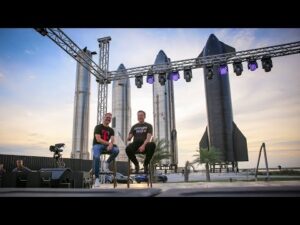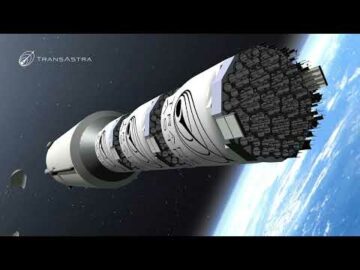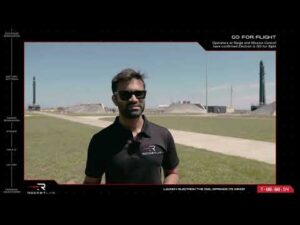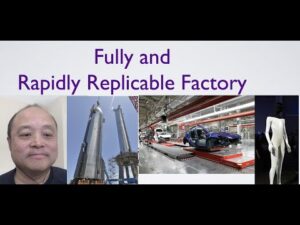NASA scrubbed the Monday Artemis launch because of fuel leaks.
SLS has a stress crack. NASA engineers found that the crack was actually in the insulating foam on the flange, not in the rocket’s metal structure. “That ice that formed is essentially air that’s being chilled by the tank that gets trapped inside of a crack in the foam but not the actual tank,” Nail said.
If they do not have to send the SLS rocket back to the Vehicle Assembly building, then they have to fix and make it work for launch before September 5. Emptying the tanks to try to fix and then trying again would happen September 2nd at the earliest.
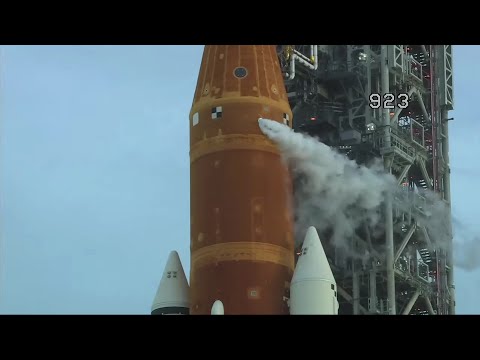
Hydrogen fuel leaks impacted NASA’s countdown test in April, resulting in numerous repairs. Another test in June had more success, but still experienced some leakage.
Monday, was the first full reloading of cryo fuel.
This will likely mean sending the rocket back for more repairs. This would mean October or later for the next try.
If the first Artmeis test launch is successful it would send the Orion capsule with three dummies around the Moon. Astronauts would ride in the second flight and soar around the moon. The hope is to perform the second launch in 2024. A two-person lunar landing could happen by the end of 2025.


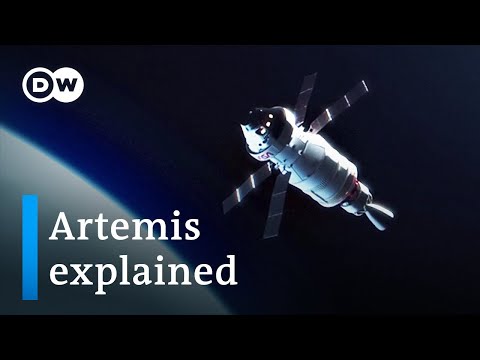
Thirteen secondary payloads will also come to the Moon on Artemis I. The payloads include small satellites that will study the lunar surface, measure magnetic fields in space, and assess the impact of space radiation. These satellites will launch in Orion’s stage adapter. Another four payloads will fly on Artemis I inside the Orion crew module, including a vest that could help astronauts avoid harmful space radiation in future deep space missions.
Artemis II
This mission is crewed and tests Orion’s life support systems with four astronauts aboard. Artemis II will demonstrate critical functions including mission planning, system performance, crew interfaces, and navigation and guidance beyond low Earth orbit. After launching, SLS will orbit the Earth twice, firing its engines to build up the speed to push it to the Moon. Artemis II will be a lunar flyby. It will not land on the lunar surface.
Artemis II mission would last about 21 days.


Artemis III
Artemis III is the second crewed mission of the program, and the first to land astronauts on the Moon. The crew will visit the Moon’s south pole to search for water, study its surface, test technologies, and learn to work on a world outside Earth.
After a multi-phase design effort, on 16 April 2021, NASA selected SpaceX to develop Starship HLS and deliver it to the Gateway orbit prior to arrival of the crew for use on the Artemis 3 mission. The delivery requires that Starship HLS be refueled in low Earth orbit (LEO) before boosting the NRHO, and this refueling requires a prepositioned propellant depot in LEO that is filled by multiple tanker flights. Two astronauts will transfer from Orion to Starship HLS, which will descend to the lunar surface and sustain them for several days before returning them to Orion.




SOURCES – NASA, SpaceX
Kirjutas Brian Wang, Nextbigfuture.com
Brian Wang on futuristide mõttejuht ja populaarne teadusblogija, kellel on miljon lugejat kuus. Tema ajaveeb Nextbigfuture.com on teadusuudiste ajaveeb. See hõlmab paljusid häirivaid tehnoloogiaid ja suundumusi, sealhulgas kosmos, robootika, tehisintellekt, meditsiin, vananemisvastane biotehnoloogia ja nanotehnoloogia.
Tuntud tipptasemel tehnoloogiate tuvastamise poolest, on ta praegu suure potentsiaaliga varajases staadiumis ettevõtete käivitamise ja korjanduse kaasasutaja. Ta on süvatehnoloogiainvesteeringuteks eraldatavate teadusuuringute juht ja ingelinvestor Space Angels'is.
Korporatsioonides sagedane esineja, ta on olnud TEDx -esineja, Singularity University esineja ja külaline paljudel raadio- ja taskuhäälingusaadete intervjuudel. Ta on avatud avalikule esinemisele ja nõustamistegevustele.



